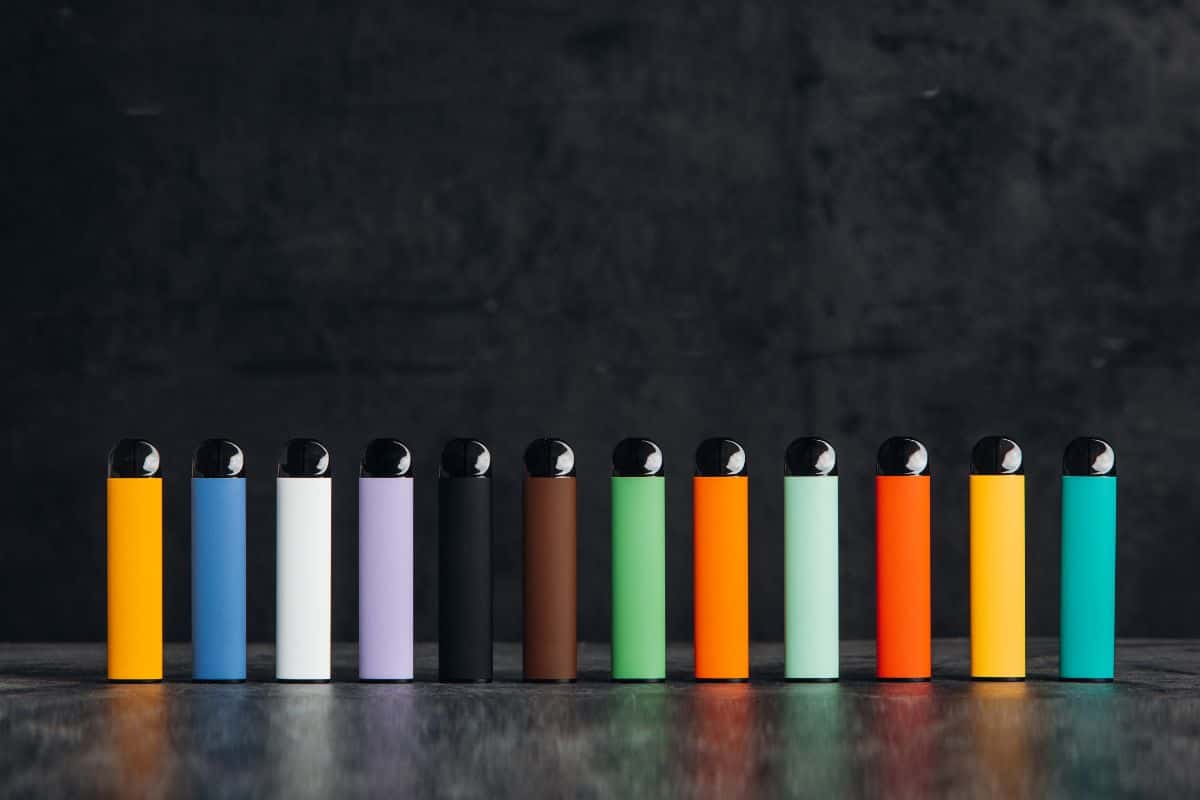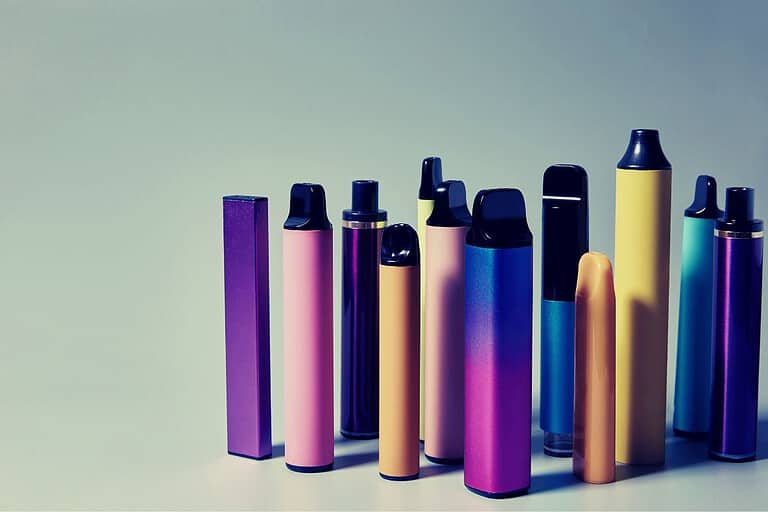Conduction vs Convection Vaporizers
Vaporizers have become a popular way to get your daily dose of cannabis. With many different styles and variations on the market, it can be hard to know which one is right for you. Once such a decision involves choosing between conduction and convection vaporizers. In this blog post, we’ll explore the differences between these two types of vaporizers, and provide tips on how to make an informed decision when buying one. We’ll also look at the pros and cons of each style so you can determine which will best meet your needs.
Table of Contents
Conduction vs. Convection
When it comes to vaporizers, there are two main types: conduction and convection. Both have their own pros and cons, so it’s important to understand the difference before making a purchase.
Conduction vaporizers heat the material directly, while convection vaporizers use hot air to indirectly heat the material. As a result, convection vaporizers tend to be more efficient and produce less smoke. However, they can also be more expensive.
Here are some other key differences between these two types of vaporizers:
- – Conduction vaporizers require less power and can be used with a variety of materials, including dry herb, oils, and waxes.
- – Convection vaporizers tend to heat up faster than conduction models and often provide more precise temperature control.
- – Conduction vaporizers are typically smaller and more portable than convection models.
So, which type of vaporizer is right for you? It really depends on your personal preferences. If you’re looking for a quick and easy way to vape on the go, the conduction model might be your best bet. However, if you want maximum efficiency and control over your vaping experience, a convection model might be worth the investment.
NEW CUSTOMER DISCOUNT
Save 15%
15% OFF YOUR ENTIRE ORDER FOR NEW CUSTOMERS USE CODE WELCOME15!

What’s the Difference?
If you’re new to vaporizers, you might be wondering what the difference is between conduction and convection vaporizers. Both types of vaporizers have their own advantages and disadvantages, so it’s important to choose the right one for your needs.
Conduction vaporizers heat up your herbs or oils directly, while convection vaporizers use hot air to cook them. This means that conduction vaporizers can sometimes cause your herbs to burn, while convection vaporizers are less likely to do so. Additionally, convection vaporizers tend to be more expensive than conduction ones.
So, which type of vaporizer is right for you? If you’re looking for a cheaper option that is less likely to burn your herbs, then a conduction vaporizer might be a good choice. However, if you’re willing to spend more money on a higher-quality device, then a convection vaporizer is probably the better option.
How can I tell them apart?
If you’re in the market for a vaporizer, you’ve probably come across the terms “conduction” and “convection.” But what do they mean, and how do they affect your vaporizing experience? Here’s a quick rundown of the differences between these two types of vaporizers.
Conduction vaporizers work by heating your material directly on the heating element. This means that your material is in direct contact with the heat source, which can lead to more Even though conduction vaporizers are typically more affordable than convection models, they can be less efficient and may not produce as smooth of a vapor.
Convection vaporizers work by heating the air around your material, rather than directly on the material itself. This means that your material is not in direct contact with the heat source, which can lead to a more efficient vape session. Because convection vaporizers heat the air around your material, they can also produce a smoother vapor. However, convection models are typically more expensive than their conduction counterparts.
Which is Better?
If you’re new to vaping, you might be wondering which type of vaporizer is best for you. Both conduction and convection vaporizers have their own advantages and disadvantages, so it’s important to know what each one offers before making a decision.
Conduction vaporizers heat your herbs or oils directly, while convection vaporizers use hot air to indirectly heat your materials. As a result, condensation vaporizers tend to be more efficient since there’s no wasted heat. On the other hand, convection vaporizers provide a cleaner taste since there’s no direct contact between the heating element and your material.
So, which is better? Ultimately, it comes down to personal preference. If you want a more efficient vape that produces great-tasting clouds of smoke, then a convection vaporizer is probably your best bet. However, if you’re looking for a more budget-friendly option that’s still easy to use, then a conduction vaporizer might be the way to go.
Convection Vaporizers
There are two main types of vaporizers: conduction and convection. Both have their own advantages and disadvantages, so it’s important to know which one is right for you before making a purchase.
Conduction vaporizers heat your herbs or oils directly, while convection vaporizers use hot air to indirectly heat your material. This means that convection vaporizers can take longer to heat up, but they’re less likely to overheat or burn your material.
Convection vaporizers are also usually more expensive than conduction vaporizers, but they offer a better vaping experience overall. If you’re looking for the best possible vapor quality, a convection vaporizer is probably the way to go.
Pros:
There are a few key benefits that tend to make conduction vaporizers stand out and be a more popular choice among consumers. One major advantage is that these types of vaporizers tend to heat up much faster than convection models. This means that you can start vaping sooner after turning on your device. Additionally, since the heating element is in direct contact with the material, it tends to produce more consistent results and provide a better flavor than convection vaporizers. This is especially important for those who want to enjoy the full flavor profile of their favorite herbs and spices. Finally, conduction vaporizers tend to be less expensive than convection models, making them a great option for those on a budget.
Cons:
If you are looking to buy a vaporizer, it is important to know the difference between conduction and convection vaporizers. Both have their pros and cons, so it is important to choose the right one for your needs.
Conduction vaporizers heat the herb directly, which can lead to uneven heating and potential combustion. Convection vaporizers, on the other hand, use hot air to extract the active ingredients from the herb, resulting in a more even vapor and less potential for combustion. However, convection vaporizers can be more expensive than conduction vaporizers.
So, what is the right choice for you? If you are looking for a cheaper option, a conduction vaporizer may be the way to go. However, if you want to ensure an even vaporization and avoid any potential risks of combustion, a convection vaporizer may be the better option.
Conduction Vaporizers
There are two main types of vaporizers: conduction and convection. Each type has its own set of pros and cons, so it’s important to understand the difference before you make a purchase.
Conduction vaporizers heat your herbs or oils directly on the heating element. This direct contact makes for a more efficient vaporization process, meaning that you’ll use less material overall. However, conduction can also lead to uneven heating and potential burning, so it’s important to keep an eye on your material while it’s vaping.
Convection vaporizers, on the other hand, heat your material indirectly by circulating hot air around it. This prevents uneven heating and potential burning, but it can also mean that your material isn’t heated as efficiently. As a result, you might need to use more material overall in order to get the same effect as with a conduction vape.
So which type of vaporizer is right for you? Ultimately, it comes down to personal preference. If you want maximum efficiency and don’t mind closely monitoring your session, a conduction vape might be the way to go. But if you prefer convenience and ease of use, a convection vape might be better suited for you.
Pros:
If you’re looking for a vaporizer, you’ve probably come across the terms “conduction” and “convection.” But what do they mean? And which one is right for you?
In a nutshell, conduction vaporizers heat your herbs directly, while convection vaporizers use hot air to indirectly heat your herbs. Both have their pros and cons, so it’s important to understand the difference before making a purchase.
Here are some of the pros of conduction vaporizers:
- -They tend to be less expensive than convection vaporizers.
- -They heat up quickly, so you can start vaping sooner.
- -They’re easy to use; simply load your herbs into the chamber and turn on the heat.
Cons:
There are a few downsides to convection vaporizers. First, they can be more expensive than conduction vaporizers. Second, they can take longer to heat up. Third, they can be less efficient with your material. Fourth, the vapor quality may not be as good as with a conduction vaporizer.
Our Top Picks
If you’re wondering what the best vaporizer is, you’ve come to the right place. In this comprehensive guide, we’ll be discussing the pros and cons of both conduction and convection vaporizers, so that you can make an informed decision about which one is right for you.
Conduction vaporizers heat your herb directly on the heating element, while convection vaporizers use hot air to indirectly heat your material. Both have their own advantages and disadvantages that we’ll go over in detail.
Generally speaking, conduction vaporizers are less expensive than convection models. They’re also typically smaller and more portable. On the downside, they can be less efficient and produce harsher-tasting vapor.
Convection vaporizers, on the other hand, are usually more expensive. They’re also usually larger and not as portable as their conduction counterparts. However, they tend to be more efficient and produce smoother-tasting vapor.
Top 3 Convection Vaporizers
1st on our list of the best convection vaporizers is the V2 Pro Series 7. The Series 7 is one of the most popular vaporizers on the market, and for good reason. It features a ceramic heating chamber that evenly heats your material, providing great flavor and consistent vapor production.
The Series 7 also has a magnetic connection between the oven lid and the base, making it easy to load and clean. And finally, the battery life is excellent, giving you up to 3 hours of use on a single charge.
2nd on our list is the Firefly 2+. The Firefly 2+ is a powerful convection vaporizer that features dual heating chambers – one for dry material and one for concentrates. It heats up quickly and provides great flavor and large clouds of vapor.
The Firefly 2+ also has a long battery life, lasting up to 5 hours on a single charge. And it comes with a carrying case, so you can easily take it with you on the go.
3rd on our list is the Mighty Vaporizer from Storz & Bickel. The Mighty is a durable, high-quality vaporizer that features both convection and conduction heating. It has an all-glass airpath for excellent flavor and comes with a detachable balloon attachment for easy filling and use.
The Mighty also has an impressive battery life, lasting up to 90 minutes on a single charge. And it comes with a storage case
Top 3 Conduction Vaporizers
- 1. The Mighty Vaporizer by Storz & Bickel
- 2. The Pax 3 Vaporizer by Ploom
- 3. The Herbalizer Vaporizer by Iolite
The Mighty Vaporizer by Storz & Bickel is one of the top conduction vaporizers on the market, and for good reason. This German-made device is built like a tank and can withstand accidental drops better than most other vapes out there. It also features precise temperature control, so you can get the perfect hit every time. The Pax 3 Vaporizer by Ploom is another excellent choice for those looking for a top-quality conduction vape. This US-made device is sleek and stylish, and offers great features like haptic feedback and an LED display. It also comes with a 10-year warranty, so you can be sure it’s built to last. The Herbalizer Vaporizer by Iolite is a great choice for those who want an all-in-one solution. This device can be used as either a conduction or convection vaporizer, making it a versatile option for those who like to experiment with their vaping experience. It also features an aromatherapy chamber, so you can enjoy your favorite essential oils while you vape.
Browse popular vape collections:
- Nicotine Disposables
- 2000 Puff Nicotine Disposable Vapes
- 2500 Puff Nicotine Disposable Vapes
- 5000 Puff Nicotine Disposable Vapes
- 6000 Puff Disposable Nicotine Vapes
- 7000 Puff Nicotine Disposable Vapes
- Disposable Vape Deals
- Best Vape Brands
- 8000 Puff Nicotine Disposable Vapes
- 9000 Puff Nicotine Disposable Vapes
- 5% Nicotine Disposable Vapes
- Rechargeable Nicotine Disposable Vapes
- Vape Coils
- Dab Wax Pens
- Dab Wax Pen Battery
- Yocan Vapes
- Vape Cases
Still Struggling to Choose?
If you’re still struggling to decide whether a conduction or convection vaporizer is right for you, consider the following:
- – The type of material you’ll be vaporizing: If you’ll be vaporizing dry herbs, a conduction vaporizer may be a better choice as it heats the material more evenly. If you’ll be vaporizing oils or concentrates, however, a convection vaporizer may be a better option as it prevents the material from coming into direct contact with the heating element.
- – Your preferred Vapor quality: If you’re looking for dense, flavorful clouds of vapor, a convection vaporizer is generally going to produce better results. Conduction vaporizers can still produce great vapor, but it may not be as dense or flavorful as what you’d get from a convection model.
- – Your budget: Convection vaporizers tend to be more expensive than their conduction counterparts, so if price is a major consideration, a conduction model may be the way to go.








